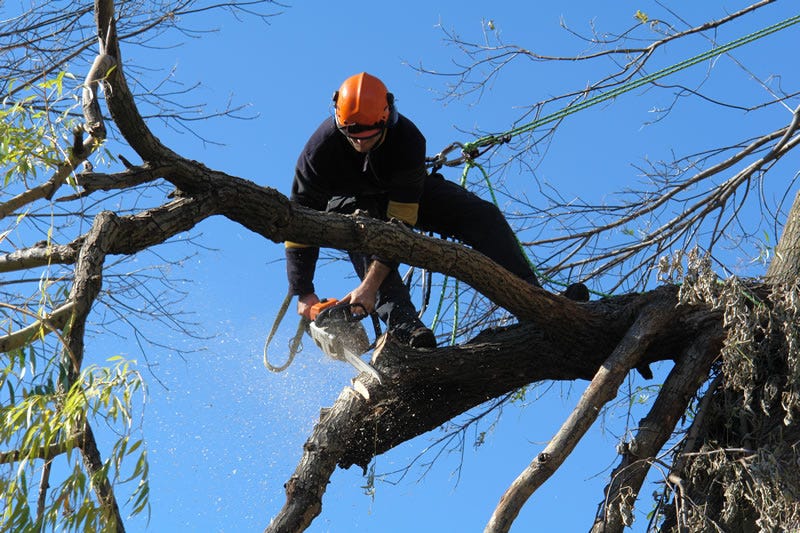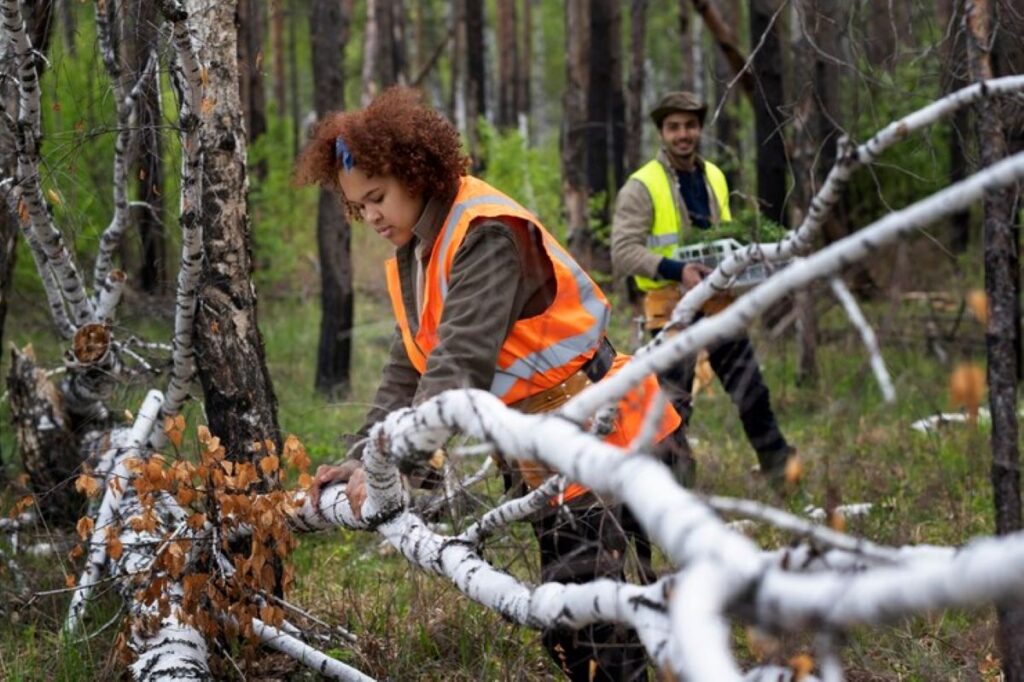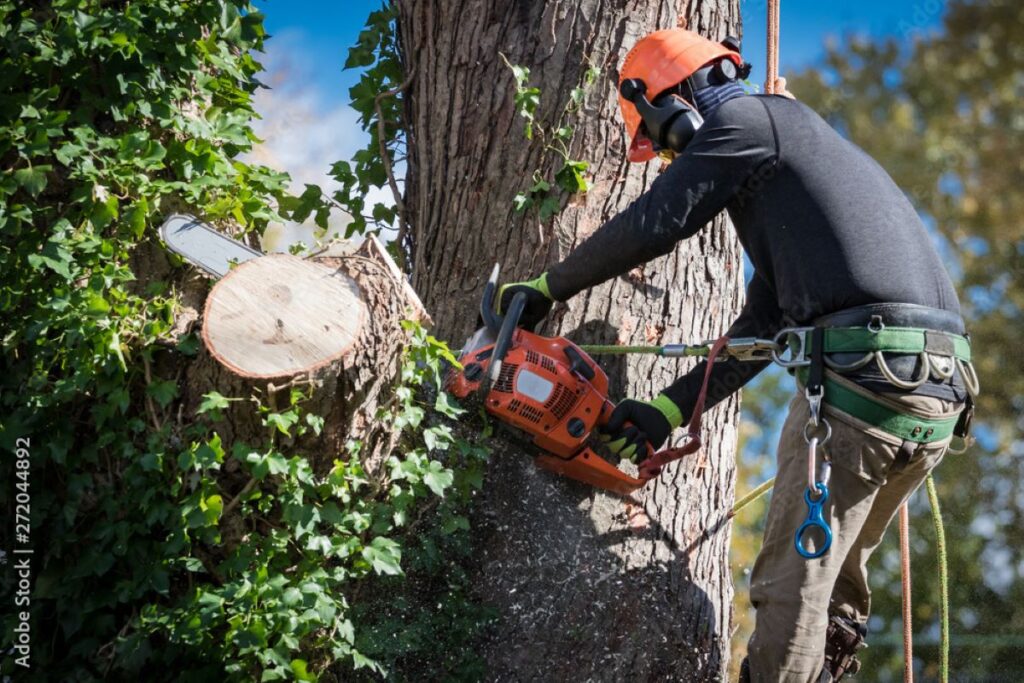
Removing a large tree from your property can be a daunting task, both in terms of the physical work involved and the financial implications. Understanding the costs associated with large tree removal is crucial for homeowners, especially when considering the size and location of the tree. This article delves into the various factors that influence the cost of large tree removal, providing insights into why size and location play pivotal roles in determining the overall expense.
Table of Contents
ToggleThe Factors Influencing Large Tree Removal Costs
1. Size of the Tree
The size of the tree is one of the most significant factors affecting tree removal cost. Generally, tree removal companies charge based on the diameter of the trunk, height, and overall weight of the tree. Larger trees require more time, effort, and specialised equipment to remove safely.
For instance, a small tree may cost between $200 to $500 to remove, while a large tree with a trunk diameter of over 24 inches can range from $1,000 to $2,000 or more. The height of the tree also plays a crucial role; taller trees may require additional rigging and climbing equipment, further increasing the overall cost.
Moreover, the type of tree can influence the cost as well. Some species have denser wood, making them more challenging to cut down. For example, hardwoods like oak and maple are typically more expensive to remove than softer woods like pine or birch due to the additional labour and equipment needed.
2. Location of the Tree
The location of the tree on your property significantly impacts the removal cost. Trees situated close to buildings, power lines, or other structures pose a higher risk during removal. Tree removal professionals must take extra precautions to ensure safety, which may involve additional equipment and labour costs.
For trees located in tight spaces or near valuable landscaping, the removal process becomes more complex. In such cases, tree removal companies may need to employ specialised techniques, such as crane-assisted removal, which can substantially increase the overall cost.
Furthermore, if the tree is located on a slope or uneven terrain, it may require additional safety measures and equipment, further driving up the cost of removal.
Additional Costs to Consider
1. Stump Removal
Once a tree is cut down, the stump remains, and its removal is often an additional cost that homeowners must consider. Stump removal can range from $50 to $300, depending on the size of the stump and the method used for removal. Grinding is the most common method, where a machine grinds the stump down to below ground level.
Some homeowners opt to leave the stump in place, which can lead to further costs down the line, such as potential pest infestations or the need for landscaping adjustments. Therefore, it is advisable to factor in stump removal when budgeting for tree removal.
2. Clean-Up and Disposal Fees
After the tree has been removed, there will likely be debris left behind, including branches, leaves, and wood chips. Many tree removal companies offer clean-up services, which may be included in the overall cost or charged separately. Clean-up fees can vary widely based on the amount of debris and the level of service provided.
Homeowners should clarify with their chosen tree removal service whether clean-up is included in the quoted price or if it will incur additional charges. Proper disposal of tree waste is also essential, as some areas have regulations regarding yard waste disposal.

Choosing the Right Tree Removal Service
1. Research and Recommendations
When selecting a tree removal service, it is crucial to conduct thorough research. Start by asking for recommendations from friends, family, or neighbours who have previously used tree removal services. Online reviews and ratings can also provide valuable insights into the reliability and professionalism of a company.
It is advisable to obtain multiple quotes from different companies to compare prices and services offered. Be wary of unusually low quotes, as they may indicate subpar service or hidden costs.
2. Verify Credentials and Insurance
Before hiring a tree removal service, ensure that they are fully licensed and insured. A reputable company should have liability insurance to cover any potential damages that may occur during the removal process. Additionally, workers’ compensation insurance is essential to protect you from liability in case of an accident involving their employees.
Asking for proof of insurance and checking their credentials can save you from future headaches and financial liabilities. It is also wise to confirm that the company follows local regulations and safety standards for tree removal.
See Also : Tree Pruning Sydney: Improve Tree Health and Safety with Expert Care
DIY Tree Removal: Pros and Cons
1. Pros of DIY Tree Removal
Some homeowners may consider removing a large tree themselves to save on costs. The primary advantage of DIY tree removal is the potential for significant savings, especially if you have the necessary tools and experience. Additionally, it can be a rewarding project that allows you to take control of your property maintenance.
For smaller trees or those in easily accessible locations, DIY removal may be feasible. Homeowners can often find instructional resources online that guide them through the process, making it seem more manageable.
2. Cons of DIY Tree Removal
However, the cons of DIY tree removal often outweigh the pros, especially for large trees. The risks associated with cutting down a large tree are considerable, including personal injury and property damage. Without the proper equipment and expertise, homeowners may find themselves in dangerous situations.
Moreover, improper removal techniques can lead to complications, such as the tree falling in an unintended direction or leaving behind a hazardous stump. In many cases, hiring a professional service is the safer and more efficient option, ultimately saving money and time in the long run.

Conclusion
Understanding the costs associated with large tree removal is essential for homeowners contemplating this task. Factors such as the size and location of the tree play a significant role in determining the overall expense. Additional costs, including stump removal and clean-up fees, should also be factored into the budget.
When selecting a tree removal service, thorough research and verification of credentials are crucial to ensure a safe and efficient process. While DIY tree removal may seem appealing, the risks involved often necessitate the expertise of professionals.
Ultimately, investing in professional tree removal services can provide peace of mind, ensuring that the job is done safely and effectively, allowing homeowners to focus on enjoying their outdoor spaces.